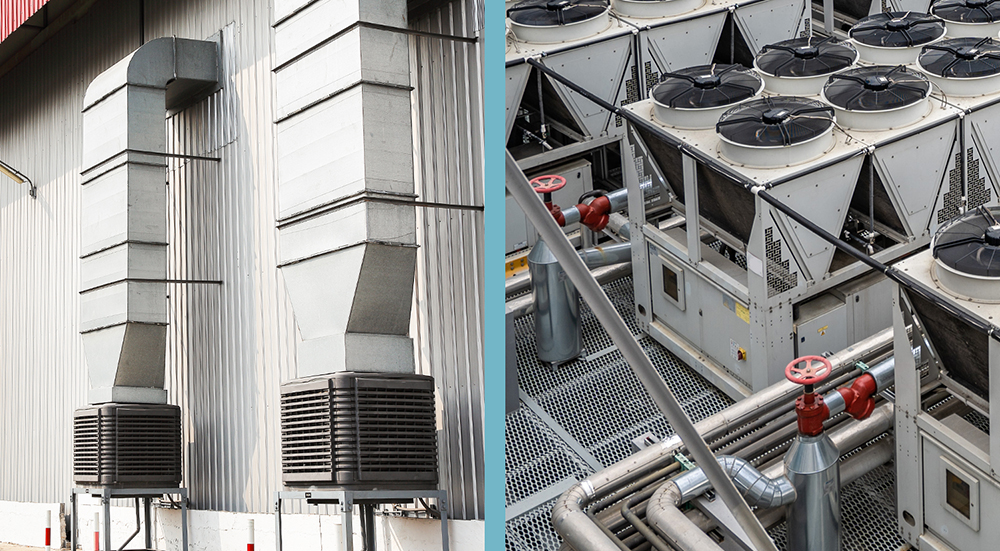
Data centers are fast becoming an essential part of everyday life and as more and more data centers pop up, it is important that the overall efficiency of the systems be optimized. Engineers have been working to provide solutions that meet resiliency and energy requirements of such specialized buildings.
Data centers are unique in that they require significantly higher amounts of cooling than other buildings. Heat Density in these types of facilities make cooling the space more challenging. Engineers have come up with several ways to cool data centers, the two that we will discuss are evaporative cooling and standard chilled water.
Evaporative cooling is a scheme where water is poured over an evaporative media. This media has lots of surface area and allows the water to evaporate easily to provide a cooling effect, much like sweating. Filtered air is then blown across the media to cool the air before it is distributed to the data center and eventually to the IT equipment.
Chilled water is a more traditional method which is used widely in comfort and process cooling applications. In this system, a chiller provides cold water that is circulated through the building in a network of pipes to individual terminal units which could be air handlers, computer room air handlers (CRAH), or fan coils. The terminal units blow air across a chilled water coil. This coil has the chilled water circulating through it which will provide cooling and conditioning to the air. Air coming off this coil will feel similar to air coming out of an air conditioner.
Pros/Cons:
There are benefits to both of these systems. The traditional chilled water system provides excellent control of the temperature and humidity of the data center. This system can create low temperature air even when the outdoor air is very warm and humid.
The evaporative cooling system cannot provide temperatures lower than the wet bulb temperature at any time. In this cooling system, there is no chiller which means a massive savings on electricity. On the other hand, the evaporative cooling system generally uses a larger amount of water than the chilled water system. Evaporative cooling will not be able to directly control humidity in the data center. If certain hardware that will be housed in the data center requires tight humidity control, this will not be a good solution. Evaporative cooling also will generally have higher temperatures in the warmer months of the year. When it gets hot and humid, the system will not be able to compensate. If high temperatures are acceptable to the hardware in the data center, this may be the most economical solution.
In the chilled water system, temperature and humidity can be tightly controlled to provide the same indoor condition regardless of outdoor conditions. The downside is that this system can use a lot of power, sometimes as much as 80% of the IT load. If tight environmental conditions are needed, this may be the best option.
Both water and electricity are valuable resources. How we use them should be carefully considered before a solution is selected. The mission critical facility experts at TechSite can help design an energy and resource-efficient system for your mission critical facility.
This resource is provided by TechSite, the mission critical facility experts specializing in consulting engineering, construction management, turnkey design build, and maintenance services. Contact us today to discuss your facility needs.
